How much is a ruby worth?
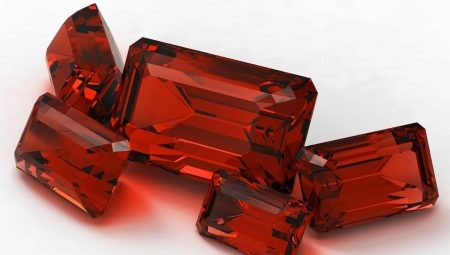
Ruby is very beautiful, there are many legends about him. It is believed that the owner of the stone becomes happy in love. A red gem is able to warn the owner of the danger by changing its color. In a magical way, all positive qualities are enhanced in a person who is constantly in contact with a ruby.
It is not surprising that those who want to get a piece of jewelry with a noble mineral are not decreasing. For those who buy a ruby for the first time, a natural question arises about its value.
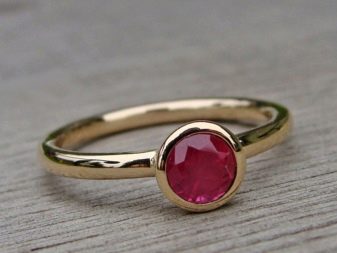
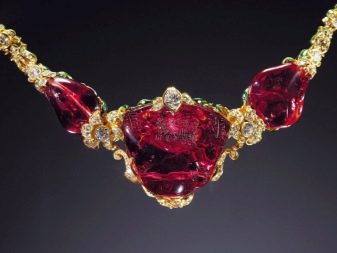
Criteria for evaluation
In order to find out the value of a jewel, you need to take into account a lot of characteristics.
Here are the main ones:
- the origin of the mineral;
- stone color;
- the presence of cracks;
- the presence of blotches, bubbles and darkening;
- the weight of the mineral;
- faceting;
- treatment.
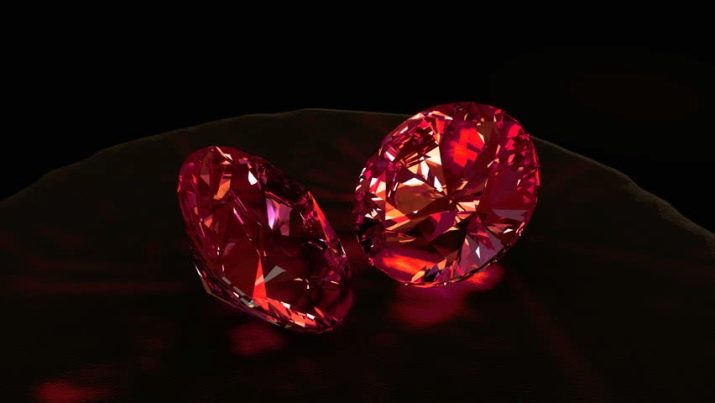
The price of natural gemstones is determined not in rubles, but in US dollars.
Field
Deposits of rubies are found on every continent, with the exception of frosty Antarctica. On an industrial scale, gems are mined in Asia: in Ceylon, Vietnam and Thailand.
Famous African deposits are found in Kenya, Mozambique, Madagascar and Tanzania. Russia has been looking for stones relatively recently. After the war, mining is carried out in the Polar Urals and in the pegmatites of the Pamirs.
The most famous, largest, highest quality and most expensive specimens of the radiant mineral have been found in Myanmar (former Burma).
The largest stone, 400 carats, was found in Burma. Unfortunately, it has not survived in its original form. It was divided into three parts.
By now, the Burmese mines have become impoverished. The bowels of the earth have given the world beauty for many centuries and have been pretty depleted.
India is considered a promising region for production. It is known that rubies are found in the same place as sapphires. And the Kashmir deposits are rich in sapphires. Along with the main fossil, rubies are also found. India may soon become a major new supplier of raw materials for the jewelry industry.
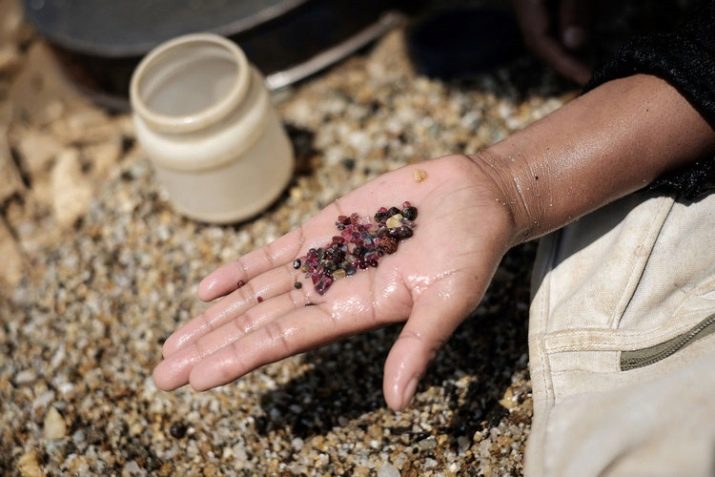
Let's give an example of the cost depending on the origin.
For one carat of Burmese large ruby, they pay from two to 90 thousand US dollars. And unheated stones from Mozambique are much cheaper. With a weight of 4-5 carats, a high quality ruby will cost the buyer from $ 500 to several thousand.
Quality
In nature, perfect stones are extremely rare. Most have various defects: blotches, voids and cracks. High quality is possessed by those nuggets that have subtle flaws or do not have them at all.
Some inclusions give the rubies a great deal of value. For example, the presence of microcracks in the form of a star with six rays inside the stone significantly increases its cost. Such specimens are extremely rare, therefore they are highly valued.
Cleanliness is a qualitative measure. By purity, minerals are divided into 3 categories:
- the first includes clean stones and those that have scanty inclusions or thin stripes-cracks;
- the second includes corundums with small defects and thickenings;
- the third consists of opaque specimens or stones with large opacities.
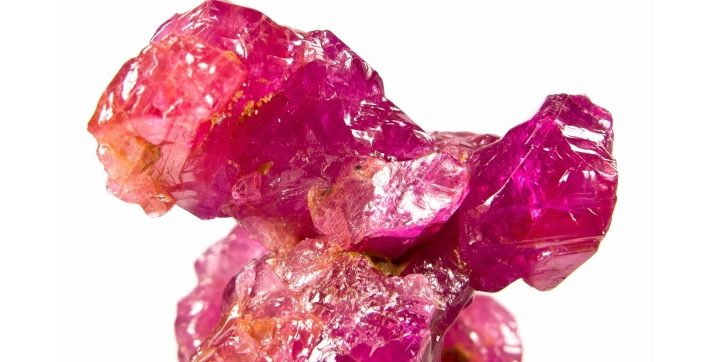
Processing has a significant impact on the price. Cut with the correct shape and proportions is highly valued. After cutting, the stone should not be left with indentations and chips, scratches and marks.
In an effort to preserve the size of the ruby, the cutters make its lower part, called the pavilion, elongated. Such actions impair the appearance.
Crystals of a round shape have the best appearance, their value is higher than that of pear-shaped "relatives" and cut of the "Marquis" type. The cabochon cut is used for minerals with a large number of inclusions and streaks, called in the professional language "star".
The price of corundum also depends on the type of processing. Stones that do not require special complex heat treatment account for no more than five percent of all stones ever found.
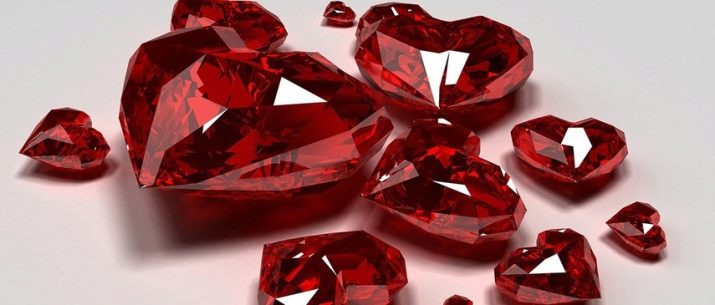
To improve the quality of gems, their purity and color, heat treatment is used. The operation is called refinement. The starting material is placed in special chambers and heated to 800-1900 degrees. Under the influence of heat, the color changes, shades are eliminated. The inclusions inside the ruby melt and the purity increases.
If we compare stones that have undergone heat treatment and ordinary stones, the prices of the latter are twice, or even three times higher, all other things being equal.
Refining often ends with an abundance of cracks. Defects are eliminated by filling with lead glass. It looks like a clean beautiful stone. However, these rubies are among the cheapest. They are most often found in jewelry stores, along with synthetic counterparts. The cost of "patched" corundum varies in the range of US $ 1-20 per carat.

The size
With regard to precious stones, it is customary to talk not about size, but about weight. Mass is the most significant characteristic. Weight is measured in special units - carats. For a better comparison with conventional weights, you need to know the ratio: 1 carat = 0.2 grams.
The price of the mineral is set for 1 carat. However, even here everything is ambiguous. Small stones have a lower carat value than large gems... There is no direct relationship between weight and carat value. Everything is individual.
The price is tied to both the size of the stone and its quality. But the larger the size, the less the likelihood of perfection. So, it is known that rubies of three or more carats are extremely rare. And a 5-carat mineral that has no defects is simply impossible to find. If it works, it will be a sensation. It is believed that ideal stones weighing no more than one carat are available on the market.
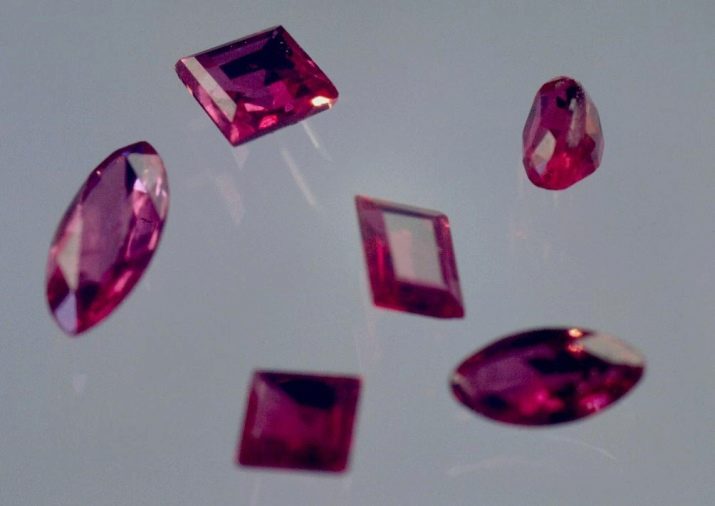
Colour
The color of the ruby is no less important in determining the cost. The main color is red. Saturation varies from pale to bright saturated. There are gems with pink, purple and orange hues. Deviations from the base are caused by natural inclusions.
An expert opinion is drawn up for the most valuable stones. It indicates the color. Pure bright red ruby is referred to as pigeon blood.
According to the color classification, rubies are:
- bright red;
- normal or medium red;
- light red.
When describing a color, its intensity and saturation are taken into account. Bright specimens are more valuable than pale and cloudy ones.

The cost of natural stones
The estimated cost of crystals is set by specialized organizations.
The results are printed in the respective journals.
- Low quality stones assessed by origin. One carat can cost both $ 75 and $ 3500. Burmese corundums are more expensive, African corundums are cheaper.
- For medium quality rubies from Myanmar they ask from 5 to 12 thousand dollars. Gems from Mozambique are somewhat cheaper - from 2 to 5 thousand dollars. The cost of processed stones is even lower - from one and a half to four thousand dollars.
- Real rough ruby very good quality from Burma is estimated at between 16 and 40 thousand dollars. From other deposits - from 5 to 9 thousand dollars.
- Average price of a heated crystal excellent quality 12000-23000 $. Mozambican and Burmese species cost more: $ 20,000-30,000 and $ 40,000-70000, respectively.
Large stones weighing 4 carats or more are estimated at hundreds of thousands of dollars. They can be bought at auction for 60-90 thousand dollars. If we take the average value, a 1 gram gem will cost the buyer $ 375,000.
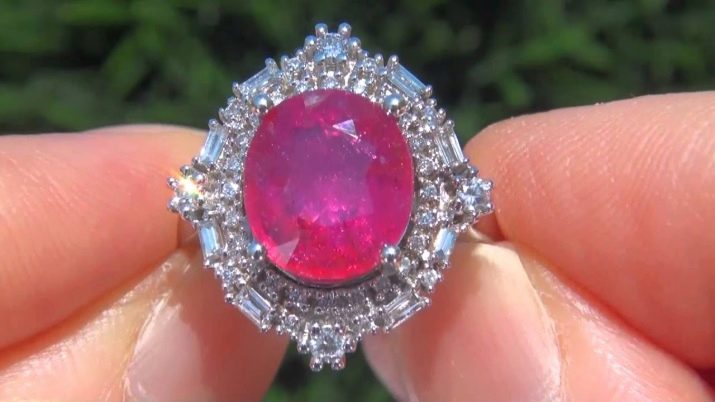
The price of synthetic analogues
Industrial production of artificial rubies is established in the USA, Great Britain, France, Switzerland and Germany.
The stone is obtained from molten corundum. The initially obtained product is transparent. The additives give it any color you want.
Despite the fact that an unnatural ruby looks better than a natural one, it costs half as much.
Most commercially available jewelry contains synthetic stones.

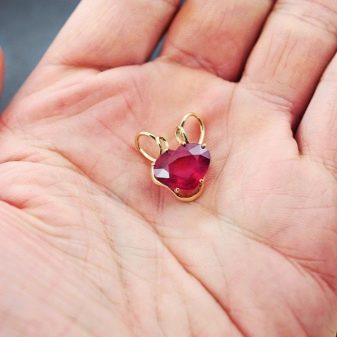
Features of prices in Russia and abroad
The Russian classification of rubies divides them into 3 quality groups, depending on the presence of defects and colors.
- The first includes those in which a minimum of defects... Small stripes or dots are scattered throughout the volume, and not grouped in one zone, and they can be seen only with the "armed" eye. High quality is estimated at a minimum of 800, a maximum of $ 1,500. They are not found on free sale.
- The second category allows the presence of visible defects and minor inclusions in different zones of the stone. The cost is $ 500-800.
- Rubies are cloudy and have many defects in the third category. Their cost is $ 200-500.
Prices are for 1 carat.
Abroad, when setting prices for precious stones, their origin is taken into account first. Stones from Burma (Myanmar) are rated higher than others.
Selling a ruby at a record price is shown in the following video.








